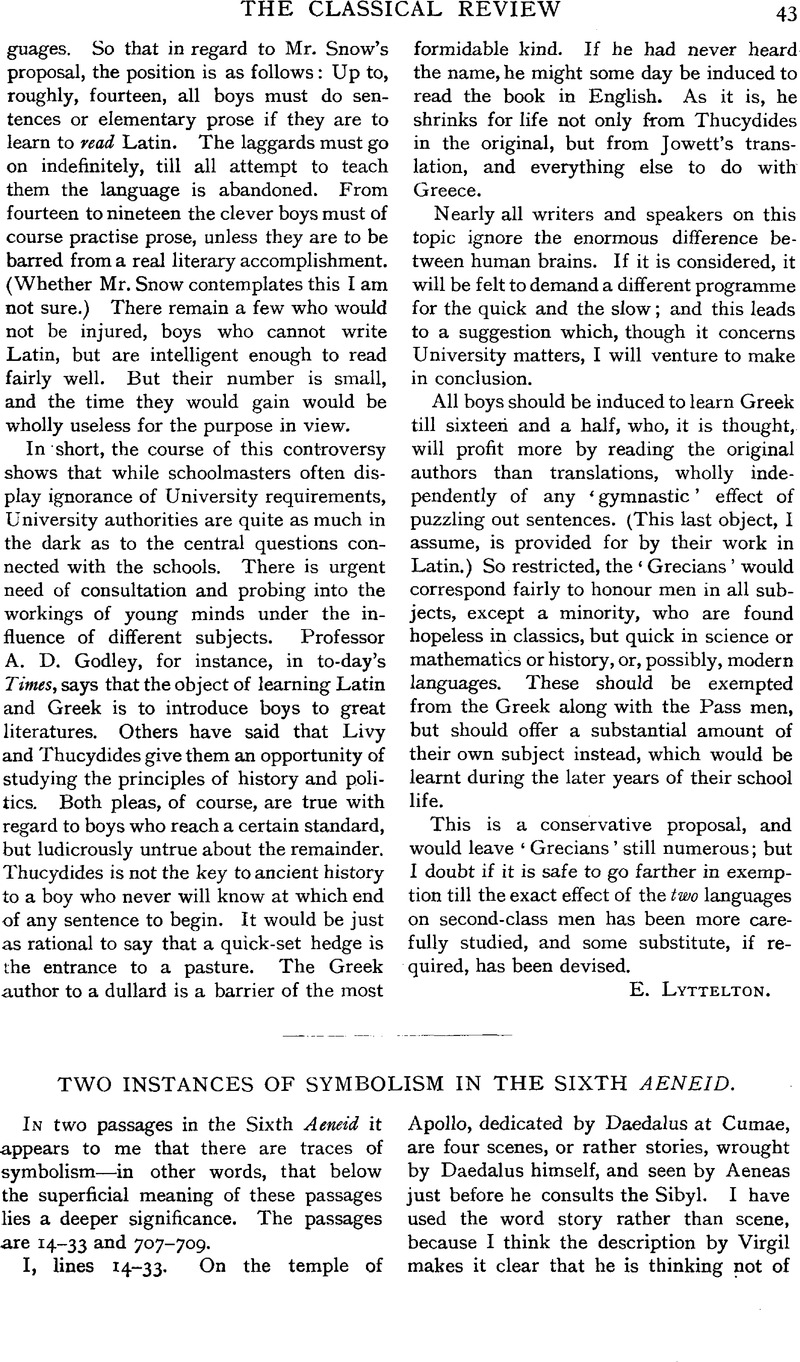Article contents
Two Instances of Symbolism in the Sixth Aeneid
Published online by Cambridge University Press: 27 October 2009
Abstract

- Type
- Original Contributions
- Information
- Copyright
- Copyright © The Classical Association 1910
References
page 44 note 1 Plutarch, Theseus, c. xvii.
page 44 note 2 Catullus, 64, lines 76–115; see Conington, passim, and other commentators.
page 45 note 1 For another instance where Virgil has followed, but not reproduced, a simile of Apollonius Rhodius, see Conington's note on Aen. VI. 309:‘Putting the similes side by side, we may see that there is a delicate propriety in Virgil's which is wanting to Apollonius'.’
page 45 note 2 For a complete account of the bee as ‘emblematic of a fresh incarnation,’ as ‘a symbol of immortality, if not of re-incarnation,’ as ‘a sacred animal closely associated with the birth and death of the soul,’ see the article by Mr. A. B. Cook in the Journal of Hellenic Studies, vol. xv., p. I.
page 45 note 3 Ed. I. 54; V. 77; X. 30. Georg. II. 213; IV. 30, 54, 109, 160, 181, 270, 304.
page 45 note 4 The above list exhausts the occasions where Virgil uses the word lilia.
page 46 note 1 Petrus Capuanus, commenting on the Clavis of Melito of Sardes.
page 46 note 2 Spicilegium Solesmense Ed. Pitra II. 406; III. 475, 476.
page 46 note 3 Purg. XXX. 13–21.
- 1
- Cited by


